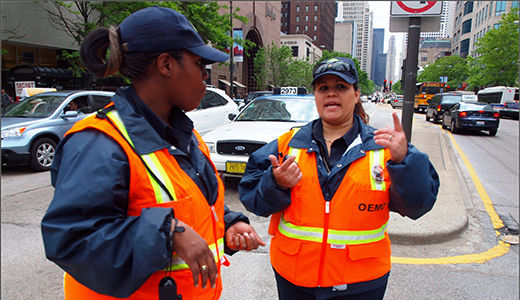
A new study declares the “war of the sexes” to be over. According to the findings of a newly released joint report from California First Lady Maria Shriver and the Center for American Progress, Americans are increasingly welcoming women into the workforce and as breadwinners and co-partners in their families.
These findings are based on a poll conducted by Time magazine and the Rockefeller Foundation. The survey was take after federal job data revealed that women make up 50 percent of the workforce, up from just about one-third in the 1970s.
Almost 40 percent of women identified themselves as the “breadwinner” in their family, and another 24 percent stated they provide an equal financial contribution to their families household budget as their partner.
In 1975, only 11.7 percent of women said they were the sole breadwinner, and only an additional 16 percent said they earned an equal amount as their partner.
Most attitudes about this new situation have also improved tremendously, the survey found. More than three in four Americans view this shift in the workforce as positive. About three-quarters of men and more than eight in ten women told survey takers that they believe women workers with children are just as committed to their jobs as women workers without children.
Some attitudes, however, seem mired in the past. The survey found that 65 percent of adults say that the fact that only 30 percent of children grow up with a stay-at-home parent is a negative thing. Fifty-seven percent of men and just over half of women agree that it is better for the family if the father works outside the home and the mother takes care of the children. Almost seven in ten women think men resent women who have more power than they do, while less than half of men said this is the case.
In an essay accompanying the report, First Lady Shriver argued that these changes are “transformational,” much like the civil rights movement, industrialization, and the advent of the Internet Age have profoundly impacted American society and culture. “With working women now the New Normal, striving and succeeding in areas where they never have before, so many assumptions and underpinnings of our society are cracking open,” she wrote.
But added work and new cultural and social changes have also added stress to women’s lives, Shriver added. Government, business and male partners have to do more to ease the extra burdens of working in and out of the home. The social safety net, workplace policies and shared contributions in the home environment by men could be improved.
But the news isn’t all grim, the report found. According to a chapter by noted sociologist Stephanie Coontz, “the most stable, high-quality marriages” are those where men and women make equal contributions of labor and finances to the household.
“The marriages that do last today,” writes Coontz, “are fairer, more intimate, and more respectful than couples from previous eras would have ever dared to dream. If only we could say the same about the work policies and social support systems that families need.”
In a teleconference with reporters to accompany the release of the report this week, Shriver noted that in the interviews and group sessions with men and women from all over the country, which she participated in for this report, the people most likely to view women’s work outside the home as a positive thing were younger people from working-class families.
“You do see a difference by age, by race and it depends on whether the guy or girl was raised by a working mother,” Shriver explained. “All of that does come into context.
Center for American Progress researcher John Halpin added that attitudes also depended a great deal on political outlook. Respondents to the survey who identified as liberal tended to be more positive than conservatives about changing gender roles in the workplace and in the homes.












Comments